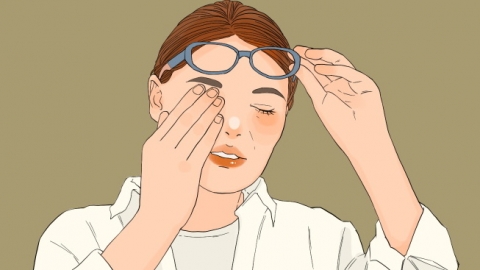What to do for eye burns
In general, the treatment methods for eye burns mainly include emergency irrigation, topical medication, eye protection measures, symptomatic supportive care, and surgical treatment. Specific analysis is as follows:
1. Emergency Irrigation
Immediately after an eye burn, the eye should be flushed with large amounts of running water for 15–20 minutes. During irrigation, gently lift the upper and lower eyelids to ensure that the water fully contacts the eyeball and conjunctival sac. This helps remove residual injurious substances, reduces ongoing tissue damage caused by chemicals or heat, and minimizes injury severity.

2. Topical Medication
Depending on the type and severity of the burn, patients may use medications under medical guidance to relieve symptoms and prevent infection. For example, if there is a high risk of bacterial infection, levofloxacin eye drops or tobramycin eye drops may be prescribed. In cases of corneal injury, recombinant bovine basic fibroblast growth factor eye drops can be used to promote corneal healing and alleviate ocular discomfort.
3. Eye Protection Measures
After irrigation, proper eye protection is essential to avoid rubbing the eyes and prevent worsening of the injury. Sterile eye shields or gauze pads can be worn to cover the eye, reducing light stimulation and exposure to external contaminants, preventing secondary injury, and creating a favorable environment for tissue recovery. Limiting eye movement also helps reduce eye strain.
4. Symptomatic and Supportive Treatment
If significant pain occurs after the burn, ibuprofen sustained-release capsules may be taken under a doctor’s guidance to relieve discomfort. For eyelid swelling, appropriate cold compresses can be applied to the eye for 15–20 minutes at a time to reduce edema. Adequate rest is important; prolonged eye use should be avoided, indoor lighting should be kept soft, and any additional eye irritation should be minimized.
5. Surgical Treatment
In severe burns involving complications such as corneal perforation or serious eyelid deformities, surgical intervention may be required. Common procedures include corneal transplantation to repair severely damaged corneal tissue, and eyelid reconstructive surgery to correct structural deformities, restore normal eye function and appearance, and improve vision.
In addition, during treatment, patients should strictly follow medical advice regarding medication and attend regular follow-up visits to monitor eye recovery. If any abnormalities occur—such as sudden vision loss, increased eye pain, or excessive discharge—prompt medical attention is necessary to adjust the treatment plan and prevent disease progression.







